A Glorious, Beautifully Crafted, Chinese and western Fusion Stunning Work of Art
日期:04-25-2024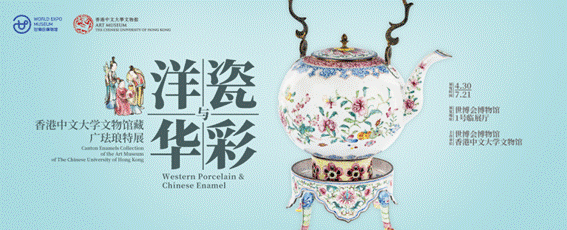
On the eighth day of the ninth month of the fifty-fifth year of the Kangxi reign (1716), the governor of Guangxi, Chen Yuanlong, wrote in his memorial:
Recently there have appeared foreign enameled wares, which are slightly vivid. Foreigners thought that the Chinese could not imitate it. But the Emperor in his busy schedule, studied its principles and instructed himself to make enameled wares, which were brilliant and beautifully made, and several times better than the foreigners' enamel.

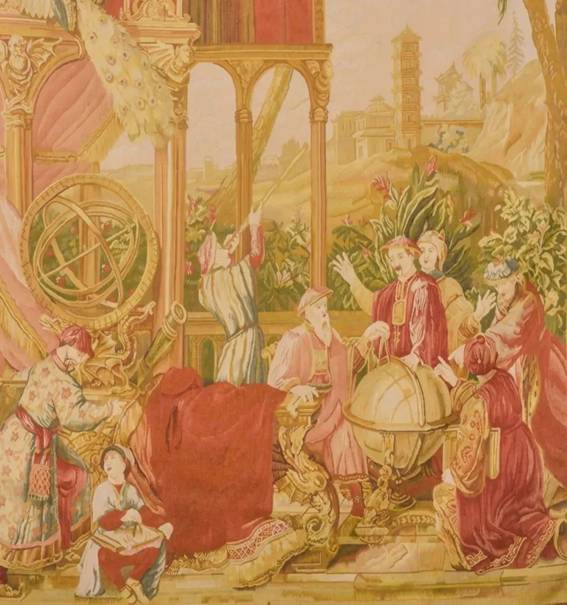
19th century "Chinese Emperor and Astronomers" tapestry (part)
Guangxi governor Chen Yuanlong said "through the year began to have foreign enameled ware", said the second year of the Kangxi open sea (1685), King Louis XIV of France sent five "King Mathematicians" to China. These five "King Mathematicians" in the church school has received rigorous scientific training, both as missionaries and scientists. They traveled for two years by sea and were finally summoned by Kangxi. They brought valuable scientific instruments and books, a total of 30 boxes. The gifts offered to the emperor were also including copper enamelware, which was popular in Europe at the time. This kind of artwork never seen before in China, quickly captured the emperor's heart. Under the strong impetus of the Kangxi Emperor, the whole state machinery is running, quickly involved in the crack and development of enamel painting technology.
Guangxi governor Chen Yuanlong said the Europeans brought these painted enamel ware but "a little vivid", just a little good-looking it.
" Foreigners thought that the Chinese could not imitate it." meaning that Westerners thought we Chinese although smart, but can not do enamel painting. As a result, under the Emperor's wise guidance, not only make it, but also "far better than foreign enamel a hundred times".
“A Glorious, Beautifully Crafted”is depicted is the Kangxi gift to his Qing dynasty palace manufacturing office enamel made of copper enamel. It can be seen that under the influence of the East-West trend, the research and development in full swing, glass making and enamel painting have reached the level of exquisite material and workmanship. As an imperial gift, it is rewarded to the ministers, which is enough to boast of the king's authority and to show the state's favor.
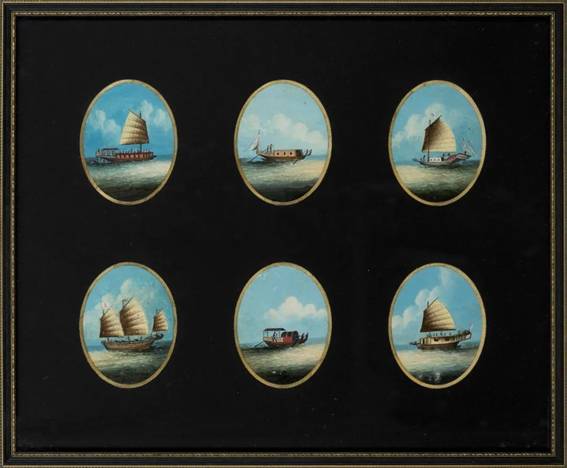
Boat
During the Qing Dynasty, Guangzhou was the first point of contact between the East and the West, At that time, European paintings and handicrafts were disembarked from the ships here and resold to the whole country through the wholesale of thirteen merchants. Guangdong craftsmen were the first people in China to come into contact with and master the Western craft of painted enamel, and the earliest record of painted enamel being fired in Guangdong is from the fifty-fifth year of the Kangxi reign (1716) of the Qing Dynasty.
Local officials are trying to curry favor with their superiors and to meet their own needs purchase by any means necessary, coupled with an increasingly thriving export market, the development of
enamel was driven by both internal and external demand.
In the last five or six years of the Kangxi period, Guangzhou folk industry has appeared in small workshops, and craftsmen were even recommended by local officials to participate in the production of enamel painting. At the same time, local officials and families of officials and eunuchs also solicited craftsmen to go to the government offices to make customized wares for the court or for themselves. By the Yongzheng period, not only contain cups, plates, pots, a complete set of wide enamel tea set exported to Europe, the plume tube and other official supplies are exported to the capital, the initial formation of the palace, officials, export three major markets. Because early broad enamel was mostly ordered or used by the elite, and even literati and officials were involved, the excellence of the quality was comparable to that of palace manufacture.
What is Canton enamel?
The term "Canton enamel" was first found in archives of the Qing Dynasty in the 18th century, referring specifically to enamelware manufactured in Guangdong. This type of enamelware is mainly made of copper as the base material and includes various crafts such as painted, basse-taille, cloisonné, and champlevé enamel. Unfortunately, during the Qing Dynasty, only painted enamel has been preserved from the Canton enamel craft, while the others have been lost.
Painted enamel is a technique in which enamel glazes are painted directly onto a base material, resulting in finished products with a three-dimensional effect and color that resemble soil paintings. Painted enamel can be categorized based on the type of base material used, such as metal, porcelain or glass, etc.
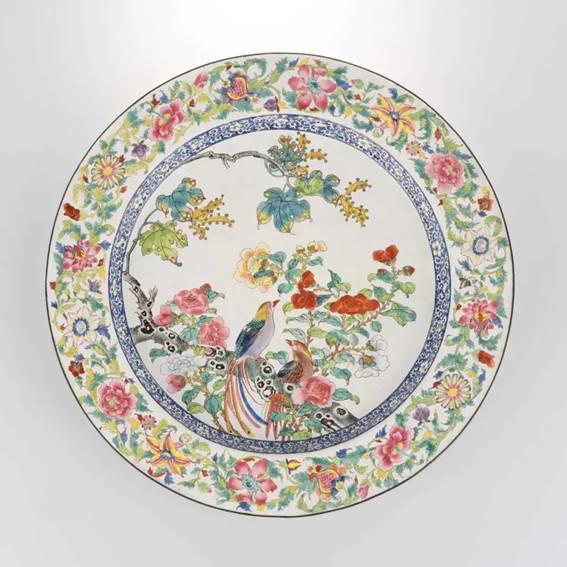
Plate with Birds and Flowers
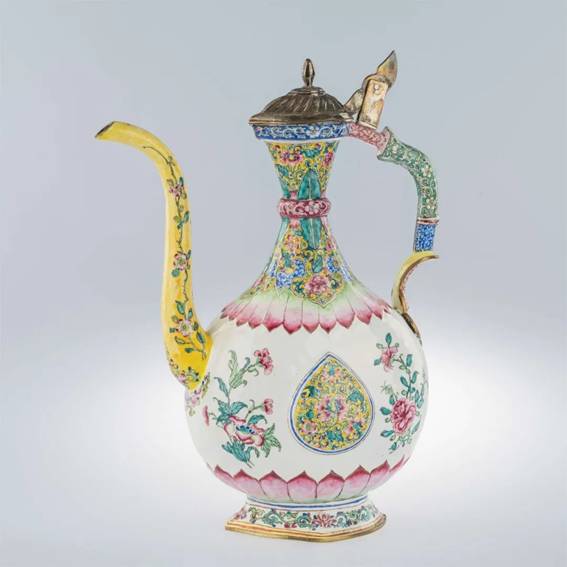
Ewer with Floral Patterns
"Western Porcelain & Chinese Colors - Canton Enamel Collection of the Art Museum of The Chinese University of Hong Kong" showcases the copper-based painted enamel produced in Guangdong during the Qing Dynasty, specifically during the Kangxi, Yongzheng, and Qianlong periods.
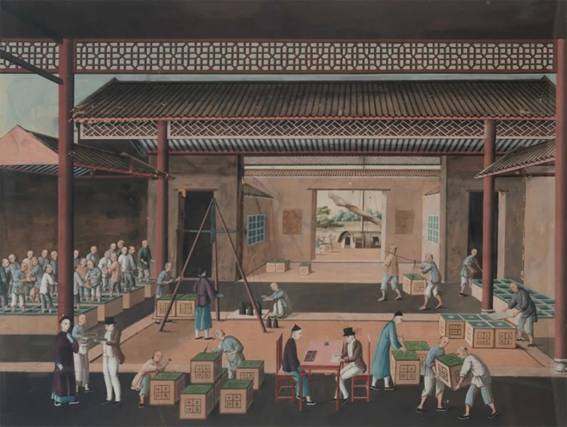
Thirteen Hongs Tea Trading Painting
In the late seventeenth century, the technique of painted enamel was introduced to China from the West, and Guangzhou craftsmen fused it with traditional Chinese techniques, gradually developing Canton enamel comparable to that of the West.
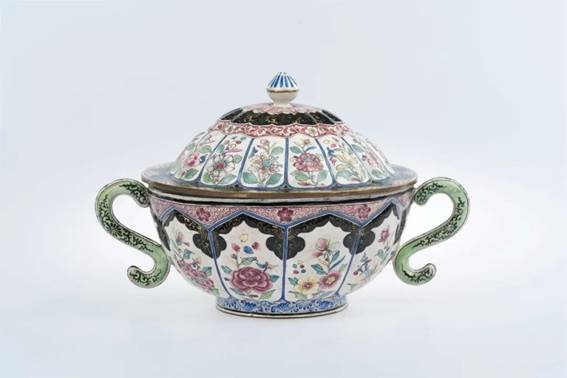
Covered Bowl with Floral Patterns and Two Handles
European enamel glaze, Western figures, Chinese painting techniques, Oriental porcelain decoration, the two civilizations of the East and the West meet in a small wide enamel ware.
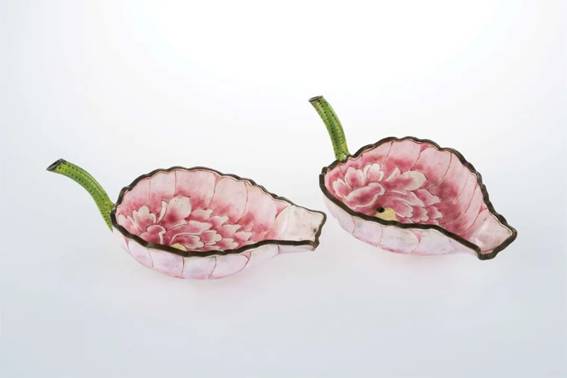
Pair of Cups in the Form of a Lotus Flower
Co-organized by the World Expo Museum and the Art Museum of The Chinese University of Hong Kong, the theme of the exhibition is "Interaction, Integration, Exchange", which highlights the special attributes of Canton Enamel as a blend of East and West, and shows the history of trade and cultural exchange between China and the rest of the world.
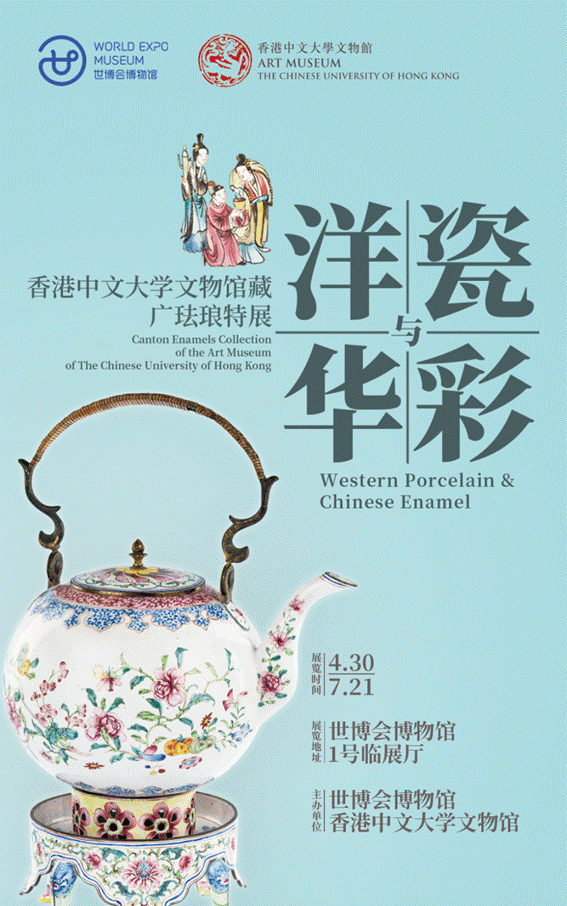
" Western Porcelain & Chinese Colors - Canton Enamel Collection of the Art Museum of The Chinese University of Hong Kong " will be opened on April 30, enjoy these colorful and ingenious works of art with you.